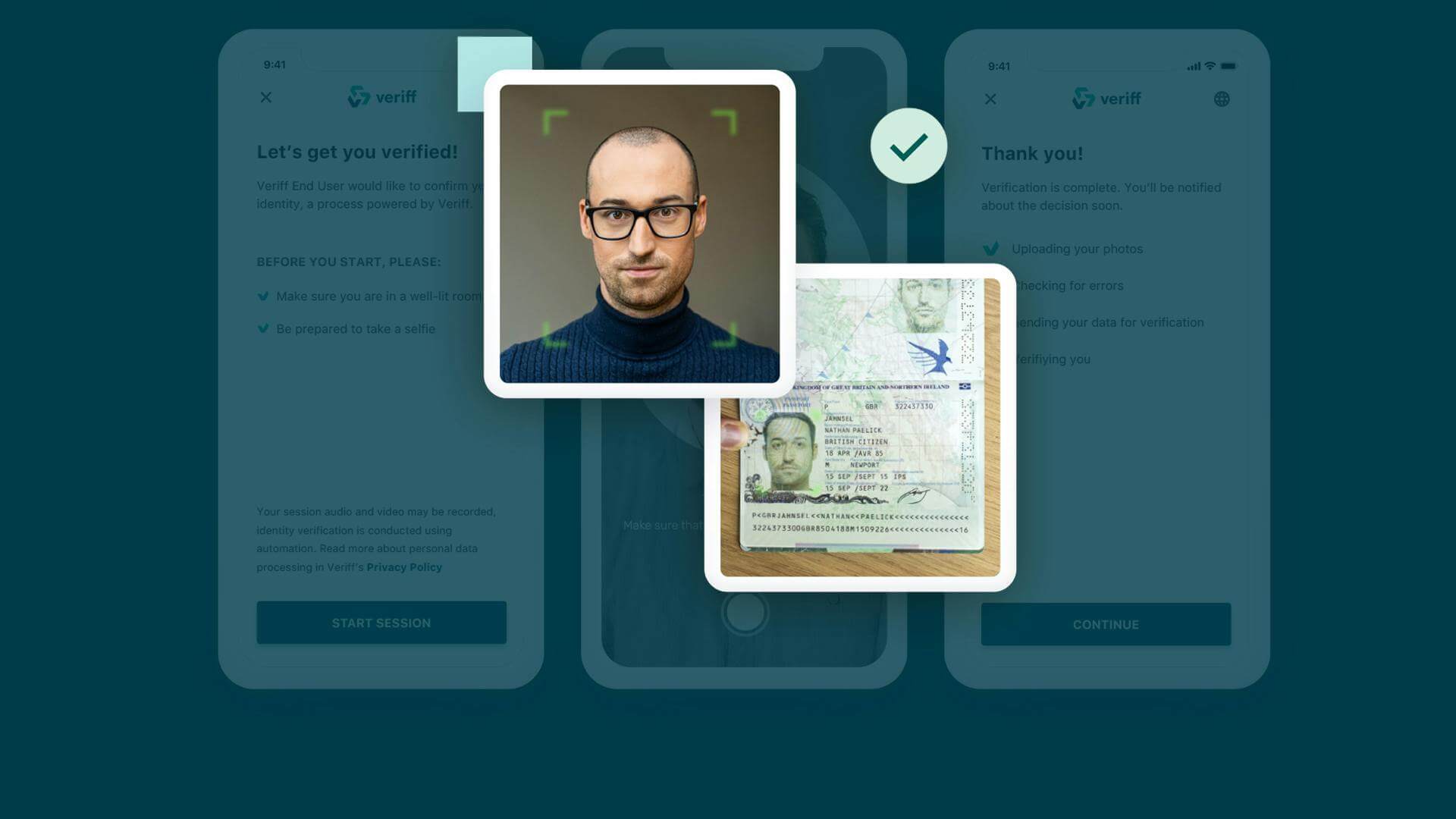Entrada de blog
¿Qué es la Autenticación? – Una Guía Completa
Profundizamos en la autenticación: qué es, los diferentes métodos que encuentras a diario, y por qué es crucial para la seguridad de tantos negocios en línea.

En términos simples, la autenticación es el procedimiento de reconocimiento de la identidad de un usuario. Se ejecuta al inicio de una aplicación y valida a los usuarios para asegurarse de que cumplan con todos los requisitos de seguridad.
Diferentes sistemas requieren diferentes credenciales para confirmar una identidad. Esta credencial suele ser una contraseña, pero también puede ser otras formas de autenticación, dependiendo del servicio y las características de seguridad que la aplicación necesita tener. Hay dos fases principales del procedimiento: identificación y autenticación real, que se aseguran de que todo sea seguro y el usuario tenga acceso a las herramientas correctas.
En este artículo, profundizaremos en este tema y hablaremos sobre diferentes formas de autenticación, tecnologías y técnicas, y te ayudaremos a entender por qué es esencial para tu negocio tener un sistema de autenticación adecuado.
Tipos de autenticación
Hay muchos métodos diferentes de autenticación y tipos técnicos. Los ciberataques están mejorando con el tiempo, y los equipos de seguridad deben estar listos para nuevos desafíos. Buscan implementar sistemas más sofisticados para proteger a sus usuarios y garantizar su seguridad. Y por eso hay tantos tipos de autenticación disponibles, ya que intentan cubrir una variedad de requisitos. Los tipos de autenticación más comunes son:
Autenticación de un solo factor/autenticación primaria
La forma más sencilla de asegurar tu acceso a un sistema. En este caso, solo necesitas hacer coincidir una credencial para verificarte en línea. Esto es más a menudo una contraseña, la forma de autenticación más popular.
Autenticación de dos factores (2FA)
La autenticación de dos factores proporciona una capa adicional de seguridad y es un método de autenticación común. Asegura que un sistema sea más seguro para sus usuarios. Después de ingresar tu nombre de usuario y contraseña, necesitas completar un paso adicional y proporcionar otra pieza de información, que puede ser un PIN, una respuesta a una «pregunta secreta», un número enviado por SMS/correo electrónico, o incluso tus características biométricas (usando Face ID o Touch ID, por ejemplo). Estos pasos adicionales son lo que convierte este tipo en un método de autenticación de dos factores.
Inicio de sesión único (SSO)
SSO te permite autenticarte de forma segura con múltiples cuentas en línea usando solo un conjunto de credenciales. Es cualquier momento en que tienes la opción de iniciar sesión usando Google, Apple, Facebook o otro proveedor. Este sistema se basa en un certificado digital que el proveedor del servicio y el proveedor de identidad han intercambiado. El proveedor de identidad envía la información de identidad a un proveedor de servicios a través de este certificado para saber que proviene de una fuente confiable.
Autenticación multifactor (MFA)
Con la autenticación multifactor, se requiere proporcionar dos o más factores de verificación y autenticación para acceder al sistema. El sistema puede ser una aplicación, una cuenta en línea o una VPN. Este método de autenticación es el componente principal de una política sólida de gestión de identidad y acceso. Usar MFA para tus sistemas disminuirá las posibilidades de un ciberataque exitoso.
Protocolo de autenticación de contraseñas (PAP)
Un esquema de autenticación en texto claro, que utiliza un apretón de manos bidireccional para proporcionar al sistema un método para establecer una identidad. En este caso, la información no está cifrada, razón por la cual esta forma de autenticación no es segura ante un ciberataque.
Protocolo de autenticación de apretón de manos (CHAP)
CHAP es un protocolo de verificación de identidad que re-autentica periódicamente al usuario durante una sesión en línea. A diferencia de PAP, este protocolo es seguro y resistente a ataques. Para autenticarse, el autenticador debe enviar un mensaje a una parte que solicita acceso.
Protocolo de autenticación extensible (EAP)
Finalmente, EAP puede soportar múltiples mecanismos de autenticación; actualmente hay alrededor de 40 métodos diferentes disponibles. EAP es un marco utilizado principalmente en conexiones punto a punto y redes inalámbricas. No es un mecanismo de autenticación específico.
¿Qué es un error de autenticación?
Es común que los usuarios reciban una notificación de ‘error de autenticación’ cuando intentan configurar Wifi, hacer una solicitud de API, o simplemente registrarse en algún sitio. Esto significa que el dispositivo no puede autenticar el sistema por alguna razón específica, que puede ser una actualización reciente del dispositivo, una conexión de red inestable, o sobrecarga del servidor. En este caso, siempre hay una forma de configurar los detalles y resolver problemas desde el método de autenticación en sí, pero depende en gran medida del problema.
Tecnologías y software de autenticación
Hay varias tecnologías innovadoras disponibles que nos ayudan a asegurar sistemas y autenticar personas utilizando diferentes métodos. Las principales tecnologías de autenticación incluyen software de reconocimiento facial, tarjetas inteligentes, autenticación como servicio, y más. Aquí están los cuatro tipos principales de estas tecnologías que hacen nuestra vida diaria más fácil:
- Tecnologías de autenticación basadas en contraseña Biométricas
- Tecnologías de autenticación basadas en certificados
- Tecnologías de autenticación basadas en token
Los métodos de autenticación han progresado con el tiempo. Hace un par de años, eran principalmente contraseñas. Pero ahora, vemos más y más opciones y tecnologías en todos lados. Este mercado se mueve rápido, y las tecnologías necesitan adaptarse a la nueva realidad. Este es el impulso detrás de las diferentes opciones y técnicas emergentes para asegurar nuestros sistemas en línea.
Técnicas de autenticación
Últimamente, la autenticación se ha convertido en uno de los procesos más comunes en el mundo de las aplicaciones móviles y el desarrollo web. Es importante conocer las diferentes técnicas para autenticar a los usuarios y autorizarlos a otorgar acceso a software particular. Los tipos más comunes de técnicas de autenticación son:
- Autenticación basada en token
- Autenticación basada en sesión
- Autenticación basada en cookies
- Autenticación basada en reclamos
- Autenticación digest
Cada una de estas técnicas tiene su propósito y caso de uso. Todo depende del tipo de servicio que ofrezcas a los usuarios y las capas de seguridad que necesites para protegerte a ti y a tus clientes.
Los principios y la importancia de la autenticación
Controlar el acceso y permitir la entrada a las personas correctas es esencial para un sistema de seguridad en línea exitoso. Puedes asegurarte de esto utilizando varios métodos de autenticación para verificar si la persona que busca acceso está autorizada a entrar o no. Típicamente, es el elemento principal para asegurar tu sistema de manera fácil.
El procedimiento es bastante simple. Para acceder a un sistema, el usuario debe ingresar su ID de usuario y una contraseña secreta. Pero este proceso tiene sus propios riesgos: no autentica realmente a la persona individual. Podría ser que un criminal adquiera esta información, permitiéndole acceder al sistema. Así que este método autentica un dispositivo sin importar quién esté detrás de la pantalla. Por eso hay tantos métodos de autenticación disponibles. Las empresas pueden implementar los que necesitan dependiendo de la naturaleza de lo que hacen y de las características de seguridad que necesitan tener. El propósito de la autenticación es asegurar que las personas correctas estén accediendo a los sistemas.
Autenticación vs Autorización
La autorización puede sonar similar a la autenticación, pero en realidad son procesos de seguridad muy diferentes. La autenticación asegura que los usuarios son quienes dicen ser. Pero, la autorización les da a esos usuarios acceso a un recurso o función específica.
Intentemos entender la relación entre estos dos con un ejemplo simple. Si posees un restaurante, la autenticación te ayuda a dar a los miembros de tu personal acceso a las áreas de trabajo si proporcionan las credenciales correctas a tus sistemas. Y la autorización les da permiso para acceder a lugares y datos específicos que necesitan para hacer su trabajo con éxito. Ambos sistemas ayudan a que seas más seguro, pero su propósito es diferente.
Resumen
Para resumir, la autenticación es una parte esencial de nuestra seguridad en línea y de la vida cotidiana. Nos ayuda a asegurar que nuestras cuentas estén seguras de los ciberataques con la ayuda de muchos métodos diferentes y efectivos disponibles.
Aquí en Veriff, trabajamos arduamente para construir confianza en línea y hacer que el mundo digital sea más seguro con las herramientas que desarrollamos a diario. Por eso, lanzamos recientemente Face Match, nuestro innovador método de autenticación y reverificación, para asegurarnos de que nuestros clientes puedan mantener seguros a sus usuarios. Y si te preguntas «¿Por qué Veriff?», ¿por qué no echas un vistazo a nuestras comparaciones con Onfido y Jumio para ver por qué nuestros clientes nos eligen.














